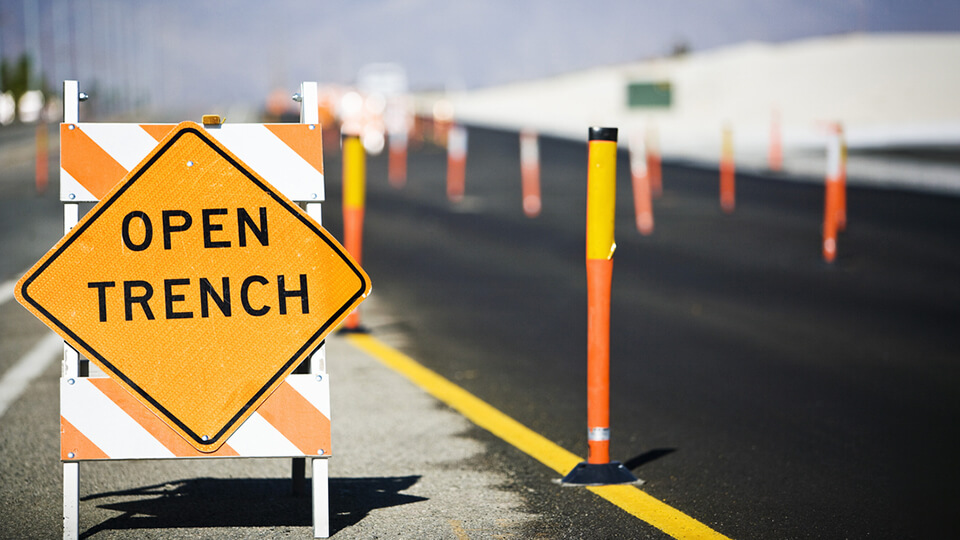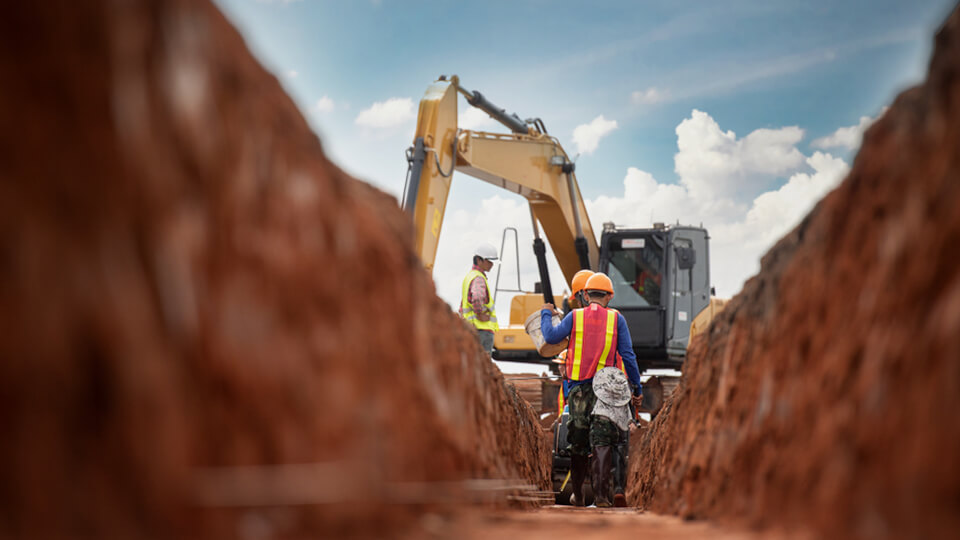Trenching safety: How to avoid collapses and cave-ins
It just takes a moment for a trenching excavation to turn into a tragedy. A settling in the soil, an unstable load above, a piece of machinery at the trench’s edge and thousands of pounds of earth come pouring down, immediately trapping or crushing workers below.
But trenching accidents are also highly preventable. It’s well understood how to avoid them and what steps to take to make sure workers are safe in and around trenches. The U.S. Occupational Safety and Health Administration (OSHA) regulates excavation work, placing clear protocols around any project of 5 feet or more.
Still, company owners cut corners, and workers may feel pressured to enter situations they know are unsafe. New workers are particularly vulnerable, as they may not yet know what safety measures to expect on a trenching job. Language barriers can also prevent challenges.
So what trenching safety measures should a worker expect on a job, and what steps can someone take if they believe the worksite is unsafe?
Trenching safety protocols
OSHA requires that excavations of 5 feet deep or more have protective systems in place. These may include:
- Sloping: Gently grading the sides of the trench so that for every foot of depth, the trench widens as well
- Benching: Widening the surface-level width of the trench with stairstep intervals
- Shoring: Supporting the trench walls with hydraulic jacks
- Shielding: Protecting workers with trench boxes
Employers are free to choose the right system for their jobsite, depending on the soil type, depth, weather and water content. Trenches of 20 feet or more require additional steps.
Additionally, trenches must:
- Be inspected before shifts, and after any rainstorms
- Have entrances and exits at regular intervals
- Be free from standing water
- Not have materials or equipment stored at the edges, where they could cause a collapse or fall on workers below
- Be tested for atmospheric hazards like low oxygen and toxic gases if they are more than 4 feet deep
The basics of trenching safety in construction

Any excavation starts with careful site planning. A competent person manages the trenching safety protocol and understands how to spot and react to potential issues. He or she will:
- Contact 811 to mark the utility lines
- Direct digging to take place at least 5 feet away from these
- Evaluate the soil
- Determine where heavy equipment will operate and where spill piles will be placed
- Determine what protective systems to use
- Ensure the systems are installed properly
- Perform regular checks on the site
- Have an emergency plan in place
It’s worth noting, too, that “competent” isn’t just a general classification. Instead, it’s an OSHA term for “one who is capable of identifying existing and predictable hazards in the surroundings or working conditions which are unsanitary, hazardous, or dangerous to employees, and who has authorization to take prompt corrective measures to eliminate them.”
After 22 workers died nationwide in trenching accidents in the first half of 2022 alone, the Department of Labor took the notable step of announcing enhanced enforcement and encouraging criminal referrals for prosecution. Recently, a construction company owner and an equipment operator were charged with manslaughter after a fatal trench collapse.
While the risk of criminal prosecution, fines and heightened inspections may motivate some employers to handle trenching more carefully, others will continue to cut corners in order to avoid the extra time and expense. Workers should refuse to enter an unsafe trench. If they suspect dangerous conditions, they may anonymously ask OSHA to inspect the site.
Georgia Workers’ Compensation Attorney
Trenching accidents are almost always serious. If you’ve been injured in a trenching cave-in or collapse, you likely have long-term injuries that require complex care. Workers’ compensation can help. Contact the Law Offices of Laura Lanzisera today for a free consultation, or give us a call at 404-991-5097.

Leave a Reply
Want to join the discussion?Feel free to contribute!